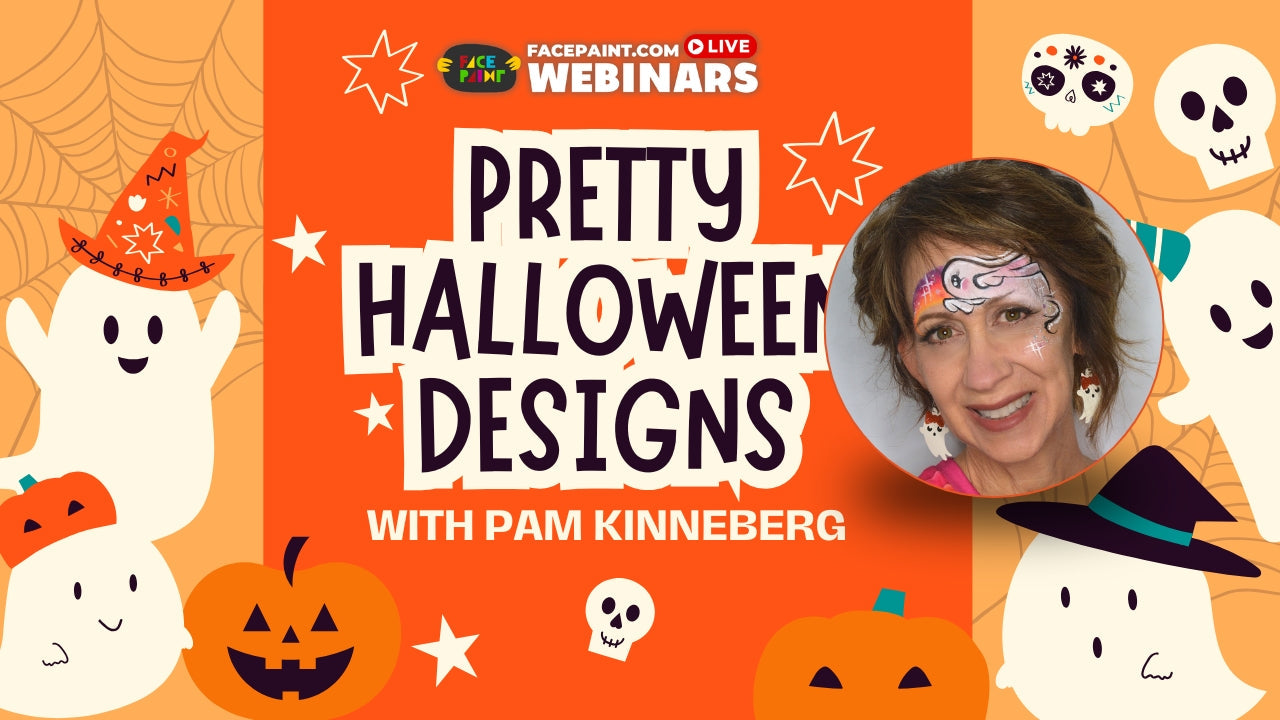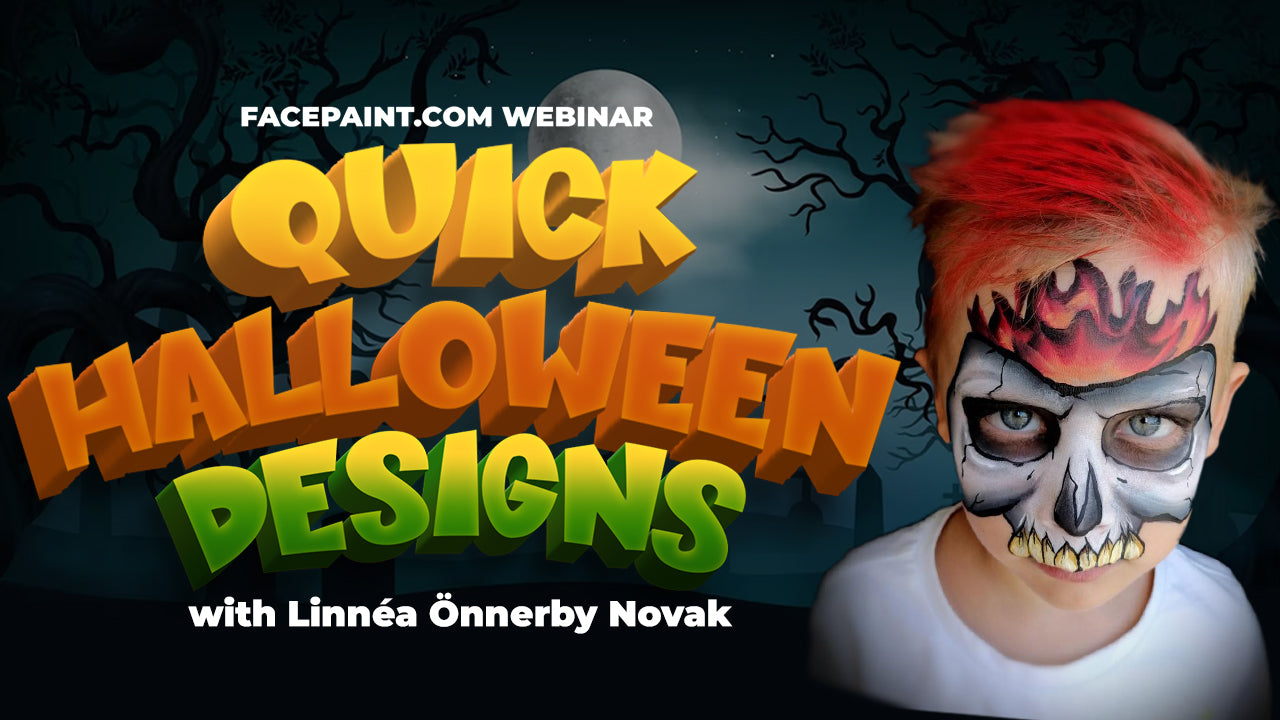I freely admit that I love glitter. Although I didn’t use it when I first started out as a face painter, I’ve been entirely converted, and there’s usually a bit of residual glitter here and there throughout my home in spite of our attempt to clean it up.
There’s probably not a face painter around who hasn’t doused a design with some glitter in hopes that the added sparkle will also give it the boost to take it from super to spectacular. But there are kids, girls as well as boys, who don’t care for glitter. Also, an occasional venue will prohibit its use. In some cases, artists prefer not to add glitter because they feel it obscures a design. So for situations where you can’t (or don’t want to) fall back on glitz-power to add extra oomph to your cheek art, what other techniques are available to take it up a notch? Enjoy this little monster face paint tutorial which features some great cheek art enhancement ideas.
Materials
• Paradise yellow face paint
• Paradise orange face paint
• Paradise light blue face paint
• Paradise blue face paint
• Paradise red face paint
• Diamond FX white face paint
• Diamond FX black face paint
• #1 round brush
• #3 round brush
• #5 round brush
• Round sponge
• Sponge
• Stencils of choice (HAS 4002 and BAM 1039)
Cheek art tips
1. Background color is a tremendous cohesive tool. The advantage of adding a color around your cheek art is that when you do, you instantly provide a background for your foreground to exist in with one easy step. It will also pull the whole design into a cohesive whole rather than leaving your cheek art floating alone on the face. For this background, I loaded my sponge with yellow tinged with a tiny bit of orange.
2. Blend light and dark colors to create dimension. If you check out the sponge below, I used a light blue on 2/3 to 3/4 of the surface and a darker blue on 1/3 to 1/4 of the circle. When applying it to the face, I twisted it a quarter turn as I dabbed it so that when I was finished, I had a beautiful spherical shape with shading. If you want a circle to appear to be a three-dimensional sphere, this is a super-fast way to do it, but the technique will work for other shapes as well. (If you haven’t had much experience doing this, set up some objects with a lamp to one side and examine how the shadows fall so you’ll know where to put the dark parts and the light parts.)
3. Make the best use of your color choices by using color theory. Some face painters come from an art background. If so, they have happily brought along handy knowledge of stuff like color theory, which is very helpful in face painting. If you don’t know much about color theory, don’t despair. One very safe color choice is using complementary colors, which are the colors across from each other on a color wheel (red/green, orange/blue, and yellow/purple). By choosing a pair of complementary colors, you can create designs which are going to be pleasing to the eye as far as color is concerned. For my design, I went with an orangish-yellow and blue.
4. Don’t underestimate the power of texture. So many times I’ve created a simple snake design on a child, only to hear the parent behind me ooh and ahh with appreciation as I grab one of my stencils and add some texture to it with a darker or lighter color. Face painting has come a long way, and there are many amazing choices for stencils out there. Choose your favorites and have some fun with them. For this design, I used HAS 4002 and BAM 1039.
5. Take a moment to consider your details carefully. I can’t tell you the number of times I’ve finished a design and then later thought of something I wish I had added to it. When under pressure, I tend to fall back on tried and true design choices which I’ve done in the past. There’s nothing wrong with that, but if I just take a moment to look at my design and think before I let the person out of the chair, I sometimes come up with a special extra which adds more humor or fun to a design. In this case, I thought about not just adding my normal monster smile, but also giving him some quirky teeth.
6. Keep on the tip of your brush while doing line work so that you have more control. Line work can make or break your design, especially when it’s in black, which is the least forgiving color and the hardest to correct. The only way to improve it is to practice, but it’s also helpful to know that holding your brush perpendicular to your surface and staying up on the tip will result in cleaner lines and more control. Also, remember that some face paints, such as Wolfe and Diamond FX, lend themselves to smoother, cleaner lines.
7. Keep in mind that lowlights will also add dimension. Highlights are commonly utilized, but another great way to make your image look like it has more depth is to also add some lowlights on the bottom area of the design where the shadows would naturally fall.
I put some red along the bottom of the stars and a swipe of darker blue along the bottom of my little monster, making them pop just a little more than they would have otherwise.
Beth MacKinney is the owner of and primary artist for Face Paint Pizzazz in the NW Chicago suburbs. She also writes for Examiner.com as the Chicago Face Painting Examiner.












